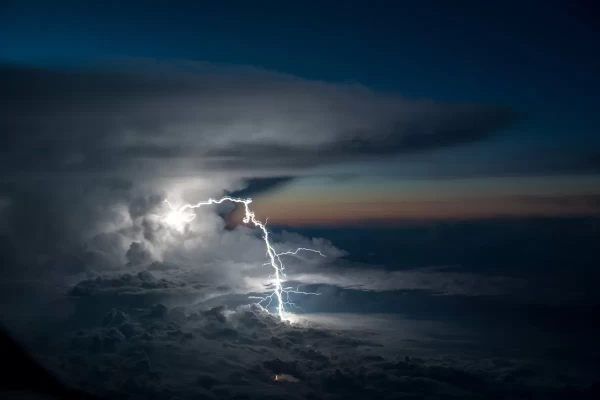What Causes Turbulence in an Aircraft?

Aircraft is the world’s safest transport but when it comes to flying a real concern of passengers is the air turbulence that is powerful enough to cause anxiety and fear. So, what air turbulence is and what causes a sudden bumpy flight? If you have ever wondered then here are the common kinds and causes of air turbulence that you should know once and for all.
Causes of Turbulence and What Happens During Turbulence?
Turbulence can be caused by different conditions – wind, storms, or objects near the airplane like mountains. No matter whatever the reason is the feeling is always unpleasant and stressful.
Flight in Nepal are more prone to turbulence due to high terrain and change in weather conditions. However, the modern aircraft's used in Nepal are designed and tested to handle turbulence and operate in the high terrains.
In aviation, domain air is considered fluid and therefore it can be measured and has weight. When an aircraft flies through the waves of air that are irregular and violent it makes the aircraft shake and bounces. It is like waves in the ocean colliding to create larger waves that are more turbulent.
You may also like: Safety Tips to Take During Air Turbulence
What are the Different Types of Turbulence?
Generally, there are 4 types of air turbulence that we often face while cruising in an aircraft that varies from topography to weather condition.
1. Wake Turbulence
It is turbulence that forms behind the aircraft as it passes through the air that eventually creates the wingtip vortices. Such vortices can remain up to three minutes in the air or over the ground just after the passage of an aircraft. The power of the vortex is governed by the aircraft’s weight, speed, and overall shape of the wing. However, the characteristics of any vortex aircraft can also be changed depending upon the extension of flaps and other wing configurations as well as speed.
2. Clear Air Turbulence
Clear air turbulence (CAT) is severe turbulence that occurs at an altitude that is above 15,000 feet in the absence of any visual clues such as cloudless regions and are caused by the strong wind shears in the jet stream. At lower altitudes CAT can occur near mountain ranges likewise even cirrus clouds can also indicate a high probability of CAT turbulence.
3. Mountain Wave Turbulence
These are the results of flowing air that is forced to rise the windward side of the mountain barrier that results in certain atmospheric conditions sinking the leeward side. Such waves are likely to form when the wind speed increases with the height or there is a stable layer around ridge height. In all these conditions when the wave amplitude is large the waves break being unstable creating the atmospheric flow turbulent.
4. Thunderstorm Turbulence
It is generally produced by the lifting of the warm air due to sloping surface and friction that arises between the two opposing air masses. It can be mostly experienced when the warm air gets moist and unstable that will eventually produce severe thunderstorms.
The lifting of the warm air by the sloping frontal surface and friction between the two opposing air masses produce turbulence in the frontal zone. This turbulence is most marked when the warm air is moist and unstable and will be extremely severe if thunderstorms develop.
Also see: Impact of Weather on Flight and Its Importance in Aviation
What are the Effects of Turbulence?
Turbulence is categorized as light, moderate, severe, and extreme. During light and moderate turbulence it forces the plane to change its attitude with minor bumpiness, however, there is no loss of control of the airplane. In case of severe and extreme turbulence, one should expect large and abrupt changes in the altitude with large variations in indicated airspeed.
Although turbulence is freighting, however, technological advancement in the aviation realm does promise aircraft as well as passenger safety minimizing the chances of severe impacts and events to almost nil. The safety technologies used in Boeing as well as in our ATR and Beechcraft being the same offer the best for the safety and the wellbeing of our passengers. Therefore, next time when you experience such turbulence during the flight please consider following the safety protocols suggested by crew members and keep calm and rest back.
Conclusion
In conclusion, while air turbulence can be unsettling, understanding its causes and types can help overcome some of the fear associated with it. Modern aviation technology and aircraft's, combined with strict safety protocols are designed handle the turbulence ensuring passengers safety. Remember, turbulence is a normal part of flying and aircraft are designed to withstand even severe conditions. The next time you encounter a bumpy ride, trust in the expertise of your pilots, the resilience of the aircraft, and follow the crew’s guidance to stay calm and comfortable.
